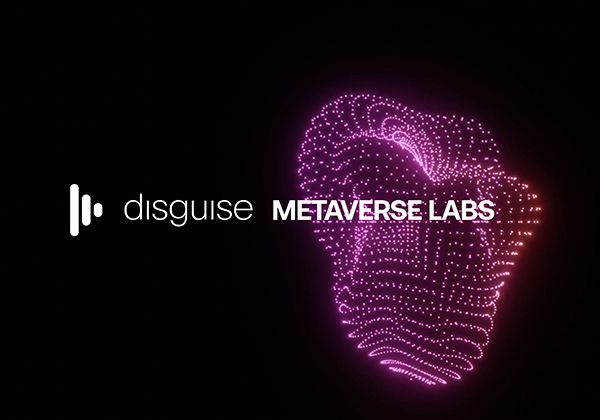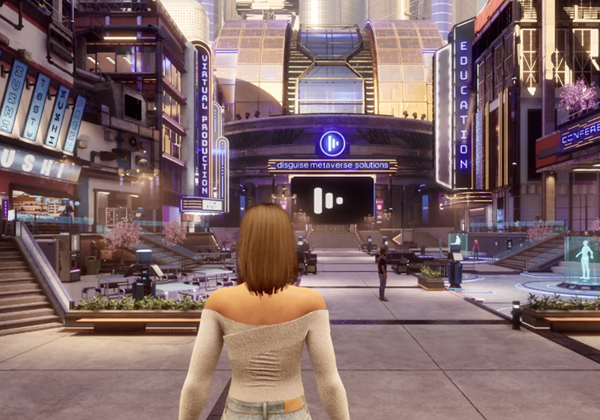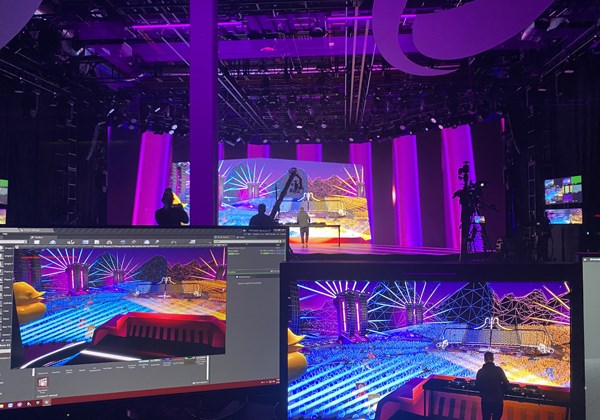
blog 2022 12 min read
Exploring art in the metaverse with Pico Velàsquez
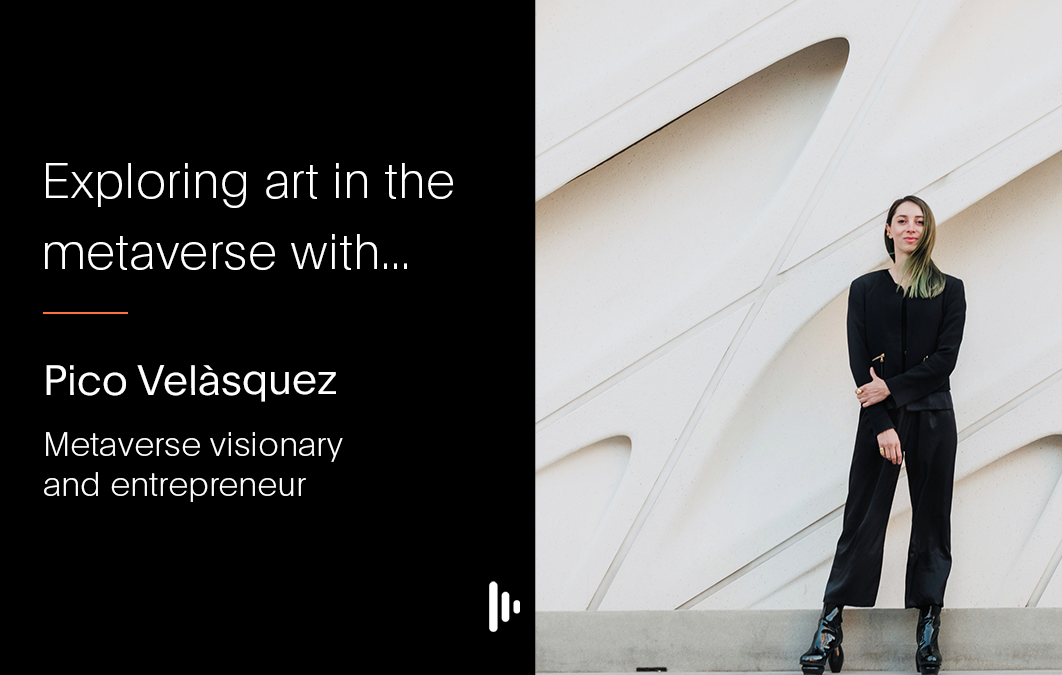
Pico Velàsquez occupies a singular place in the virtual space. As founder and CEO of VIIRA, she’s combining her passion for the arts with the opportunities the metaverse affords creators and audiences alike. We sat down with her to discuss what the future of art will be within burgeoning metaverse spaces.
What first drew you to the world of digital creation, NFTs and the wider metaverse?
My career has never been about trying to follow any one field or single element. It’s more about exploring different inspirations and seeing how, combined, they can create something new. I’m inspired by both technology and nature, and thinking of ourselves as part of it.
In my art, and as a multimedia director, I try to take a step back and think about what could make an experience unique, a new perspective, and how we might sense it differently.
One of my fascinations has been to question how we experience time and space through shifting dimensions around our content creativity. If we go back to radio, it offered us a one dimensional and single directional experience in which we could only listen, and not talk back. Film expanded upon that, where we could watch as well as hear, but it’s still limited to a flat screen where the perspective is fixed.
As we move to three dimensional spaces it begins to get more complex and more interesting. Virtual reality, video games and immersive exhibitions put us inside of the space, affording us new opportunities, but so often the content being created doesn’t fully explore that. I’m captivated by all these things.
When it comes to how our experiences have changed, and how we continue to change them, do you see technology as the main driver of that change?
I think that technology sets the base, and then our creativity allows us to explore it fully. In any given medium, if you take one hundred artists with wildly different mindsets they will each find a way to create something unique. That’s the beauty of it. Technology is the infrastructure in which each advancement provides us with a new opportunity for artists to branch out and discover all the creative possibilities that it can offer us."
Pico Velàsquez, Founder and CEO of VIIRA
What does an immersive experience mean to you?
I envision fully immersive spaces as the user being “inside” actively sensing, rather than passively looking. The space is one of the key components that shape what we experience. How is the material, the light, and sound reflecting, and how does that affect our perception of it?
Imagine listening to Vivaldi’s Four Seasons in a sphere, the music around you like symphonic fireworks. Or think about American artist James Turrell’s pieces, where the fluctuating light of your surroundings impacts you in a very physical way. The type of narrative that we’re used to is so reliant on dialogue to tell the story that it almost forgets our other senses. You can become numb to the possibilities because they aren’t given a prominent place in our storytelling.
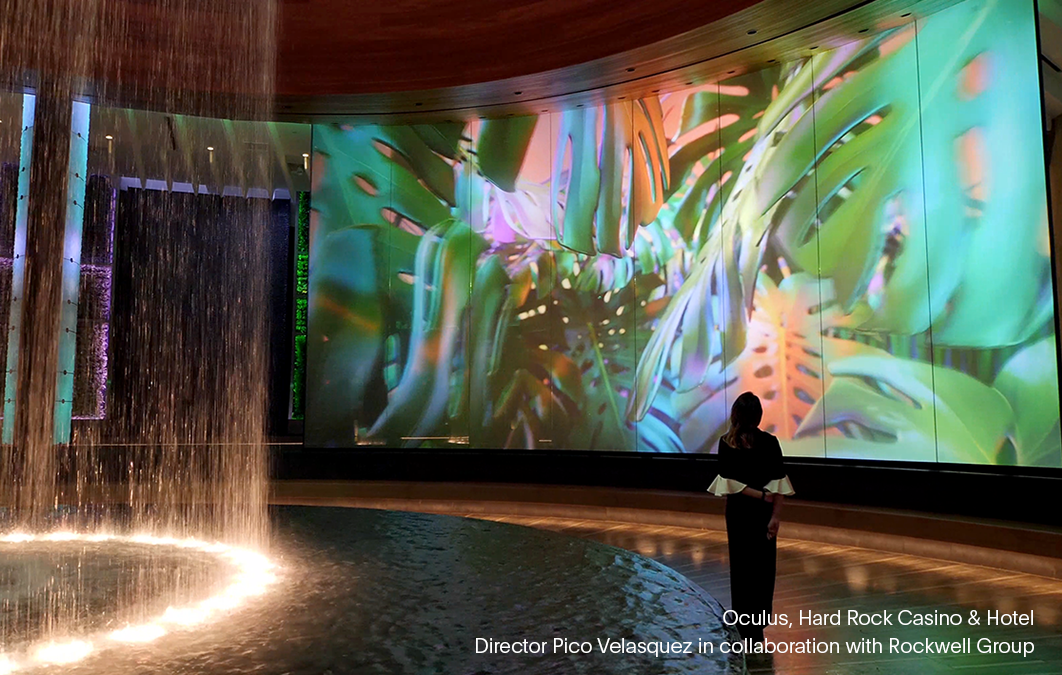
Where should creatives start when developing a new work, be that a television show, a painting, or an immersive experience?
I would start by asking what the end goal is: what meaning are you trying to put across, however abstract that might be. When I’m imagining and in a way “orchestrating” my own work I ask myself what I’m sensing, feeling, and how I can interpret that and express it through rhythms of form, colours and sound, in a way that if someone else were to see it, they would almost feel my feelings as I do in this moment.
If you think of art as the individual expression of every artist at different points in their life, then you can think of the history of art as the ultimate expression of humanity. It offers the context of where each artist was at the moment they created that piece, personally, environmentally, politically, historically. And, of course, technologically, because of the tools they use to create it.
It is both a visualised collective consciousness, as it is a communication between two beings. A moment to connect and empathise between the creator and the observer.
And so, to take that idea and transpose it to the metaverse. What does the metaverse mean to you?
At the moment it can feel silly trying to define the metaverse. It’s like defining the internet in its earliest stages, before we knew that it would become the new way of socialising, of commerce, of working. People just thought that the internet was the new version of the Yellow Pages, right? And, right now, most people think that the metaverse is the new, three-dimensional version of the internet."
Pico Velàsquez, Founder and CEO of VIIRA
At this point, what has been created has been social virtual applications that still offer a passive, non-interactive way to explore content.
Video games currently offer more because, although the characters can be somewhat categorised the same, personalisation allows for creativity and branching out. The business model of video games is primordially based on this avatar customisation. Users want to make it their own, so they spend more money buying virtual clothes and modifications for in-game attributes than they do on the game’s base price alone.
And so the first thing brands are doing in the metaverse is creating avatar skins and collectables to put themselves inside these spaces. But this isn’t the ultimate evolution of the metaverse. Brands are necessary, but for different reasons. They’re missing the point, which is that they are essentially social communities that express culture in different ways.
If brands start thinking of themselves as virtual or digital culture rather than products, we’ll see more of an evolution in what these spaces can be. The metaverse is not just a place to sell in a three-dimensional environment. It’s also a space to build a new type of community and change the relationship between product and user, brand and customer, artist and fan.
How can we realise this potential in the metaverse?
What we need to ask is ‘why are we building it?’ What is the purpose of the metaverse right now? We have the technology and the opportunity, but we have no clue what it is - so let’s start throwing out ideas and assumptions and see what works.
Gamification has always worked. So at the moment we see virtual real estate with false scarcity and a market that is built around FOMO and sales flipping. But is that the purpose of the metaverse? I don’t think so, I think the “land grab” for user acquisition strategy distracts us from the content and real value the metaverse can actually provide. This is just how it has caught attention in its early stage.
As with the internet, the metaverse will be shaped by people discovering what they find most fit. They will realise this new way of communicating and experiencing is more efficient and engaging than what exists right now on a flat screen. This will continue to evolve and build a system that is beneficial for society with a natural purpose. Apart from the major shift it'll provide for every industry use-case, it will also shift our advertising and monetization models, as brands become the early investors in the content being created, and communities rather than individuals will be the direct support and shapers of these IPs in the future.
What is your mission with VIIRA?
It’s complex to fully define, because the metaverse is in such an early stage. When you’re building a company it’s both about the vision you want to create in the world, and what the market is ready and in demand for. What I see as a vision for the metaverse is the reinvention and evolution of almost everything. Yet as a company, we don’t design the entire “universe”, we build the systems and tools that will allow users to create their own and organically grow them. By designing these tools, we play a role in designing the experience, as well as designing the economy.
At the moment we’re building the first 3D metaverse-ready marketplace, bringing together a collection of virtual art and collectables for the metaverse. We have a vast list of clients who are each looking to create bigger things. We’re working with luxury brands, soccer clubs, artists and even a chef. it goes beyond art, we’re asking everyone the same questions: what does it mean to create a virtual presence? What is the impact you want to create? What is the community you want to build, and how are you rewarding them and creating value instead of just selling products?
And so, where should brands get started if they want to get involved with the metaverse?
We start with the narrative. Who they are, what audience they want to reach, why they want that reach, and what value are they bringing to the world? We want to create that seamless transition between your story and the medium you use to tell that story. Throughout time, and especially now, there have been so many mediums to tell a brand’s story - from ads to physical installations. For brands, the metaverse becomes a new way of telling it, so you need to ask how it will allow you to build a community to support the mission of your specific artist or brand.
To give you an example: we’re working on a couple of proposals for music artists. Music is incredibly powerful, as it brings people together whether they’re listening to a song individually, or at a party, or a concert. You can’t pretend a virtual concert will replace a physical concert anytime soon. But it's not meant to be, they’re a different sort of experience, better thought of as a compliment.
But where a physical concert can hold up to 30,000 people, a virtual concert can hold 10 million, 100 million. Now, imagine doing both simultaneously? A physical concert that tours, but is also available virtually. Fans at the venue can experience it physically, but using screens at the venue, and augmented reality on their phones. The two audiences can connect. Suddenly you’re not just in the space with 30,000 people, you’re with 10 million all supporting the artist at the same time. There’s something very beautiful when people realise they’re connected by that one experience.
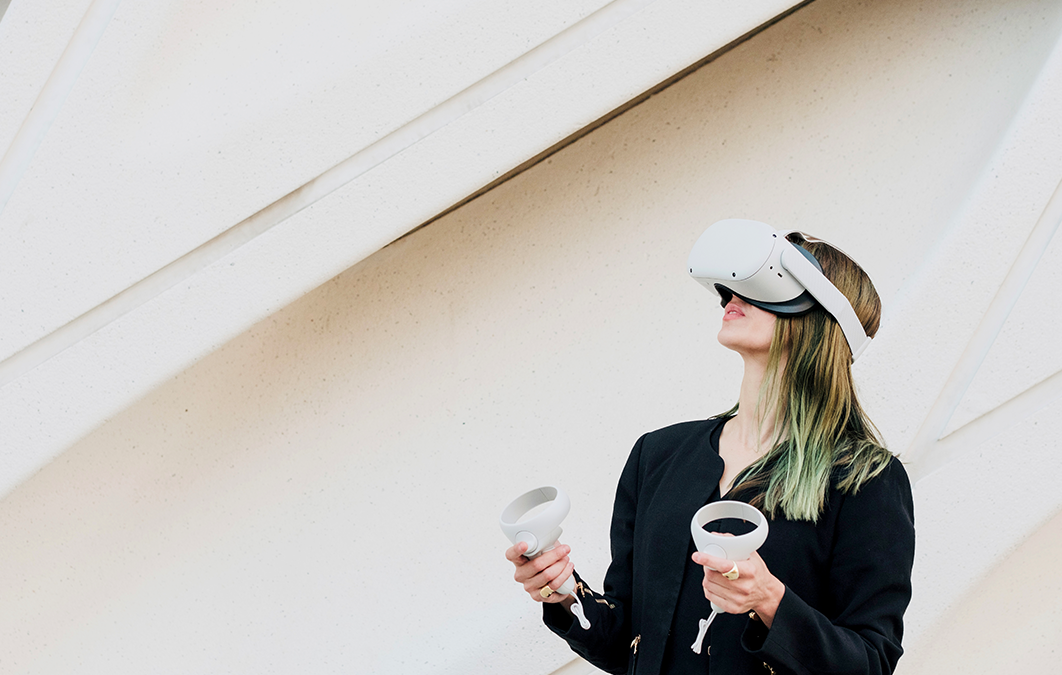
What do you think those building a digital world should consider?
One thing everyone needs to consider is to take responsibility. Companies that are building the metaverse by creating applications and content have more power than anyone else. Microsoft and Meta already have billions of subscribers on their current platforms. So whatever they do, it’s going to guide and affect humanity drastically. Everyone needs to start taking responsibility.
The second part is a reminder that the user bears that responsibility as well. Up to now, with these hierarchical centralised companies, there haven’t been enough options to choose from, and it hasn’t been a competitive levelled field. If you were to quit Facebook, you’re basically saying ‘I’m quitting my virtual life’. For a lot of generations, Facebook, Instagram and TikTok are 50%, if not 70% of their whole digital identity. The metaverse, however, is being built on blockchain. With user-owned data, there is a shift in who gets to make the decisions of where people allocate their time and money.
Understanding what people truly need and allowing democratised voting, in combination with more freedom in user-generated content is the first major step. But as users, we shouldn’t just leave the metaverse to someone else to create. We should be aware that we are all the ones creating it, either actively or passively.
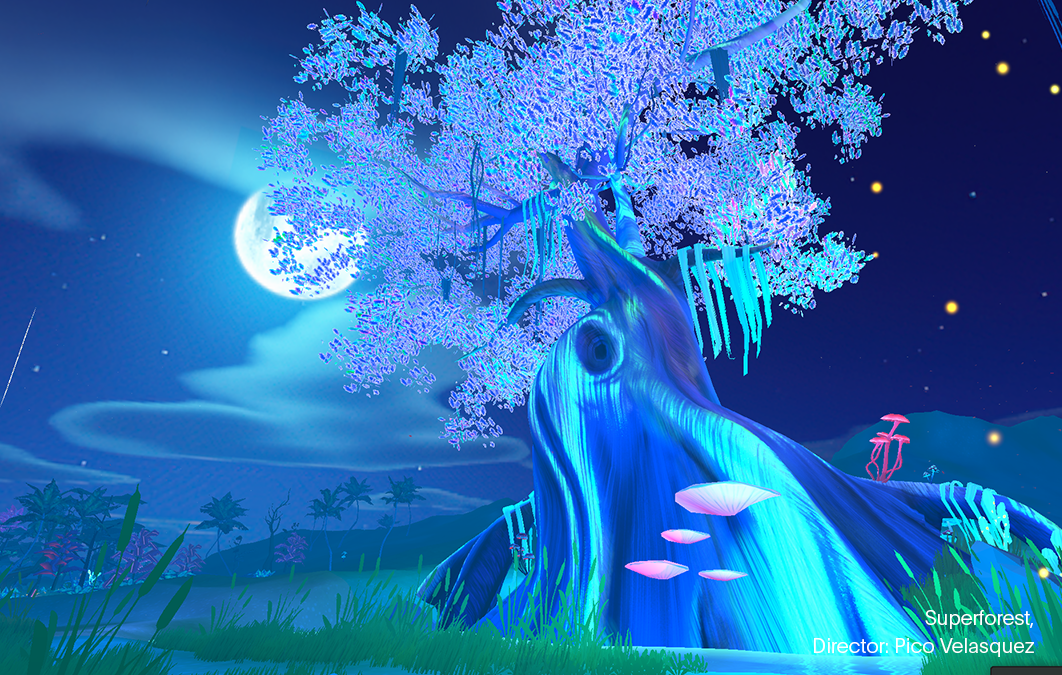
What would your advice be to anybody that wants to get into the world of digital art?
If it’s someone who has never worked in digital art, the first step is learning the tools. They can be as simple as Photoshop, or more complex, like Unreal Engine. A lot of traditional artists we work with don’t want to engage with that process, hence we do the virtualization of their work. There are two different approaches: when the artist is directly using the tool, they’re enabling a completely new form of expression. If somebody else is digitising their work, it’s an existing form of expression being transported into a new medium.
Art inside the metaverse is an experience. You can choose to create a static object, which is the default now, in our physical spaces. But that itself is still a choice. I mean, it’s the virtual world, you can do anything, right? From animations, to interactive pieces, generative work that changes over time, and including the use of AI.
And lastly, for artists coming into the NFT space, I suggest you start building your own following. Instead of having to pitch to a museum, or an institution to get them to display your art, you can go to the masses: you can go directly to the people who want to support you. And this gives artists so much power and freedom, because they’re choosing the people to participate in their work. You might want one person with a million dollars with a single collectable, or a million people buying a series for one dollar. You can also do both. There’s so much flexibility available to connect with the community who loves your work and wants to support you.
What would be your advice to creatives (such as the disguise community) who are building the gateway to the metaverse?
Right now the physical and virtual worlds are almost completely isolated. So there’s a huge potential for what disguise and its users do because it’s the bridge between these two parts. My advice would be to constantly ask how your physical experiences can expand in the metaverse, and whether you can tie them together to take place in the metaverse and the physical world at the same time."
Pico Velàsquez, Founder and CEO of VIIRA
disguise Metaverse Labs is a global network of creative and technical experts to empower brands, creatives and technologists to deliver experiences in the metaverse. Merging R&D and creative services and consultancy, Labs helps our clients achieve the art of the possible.
